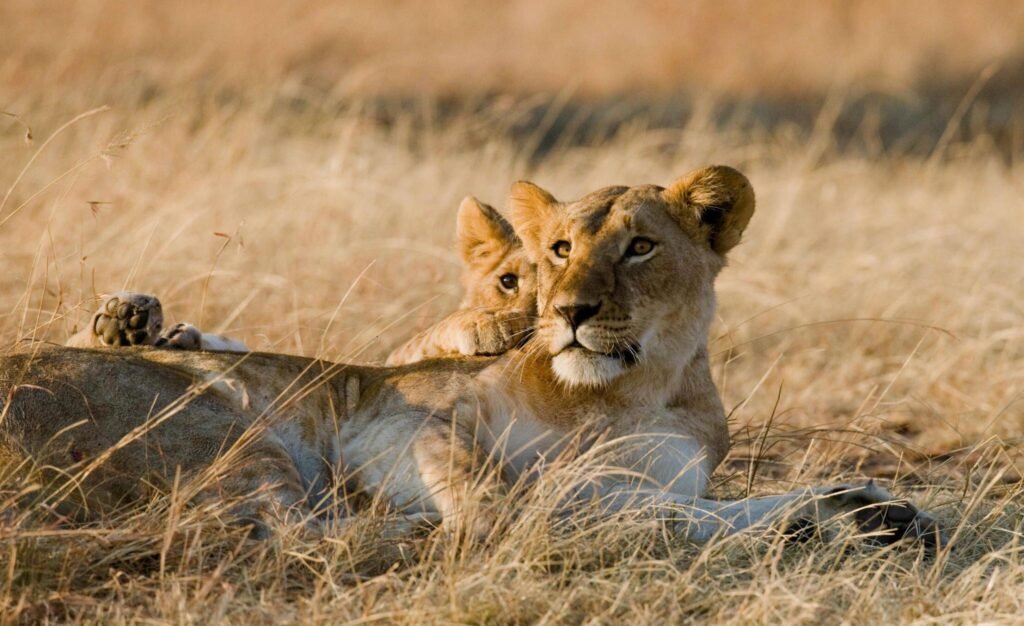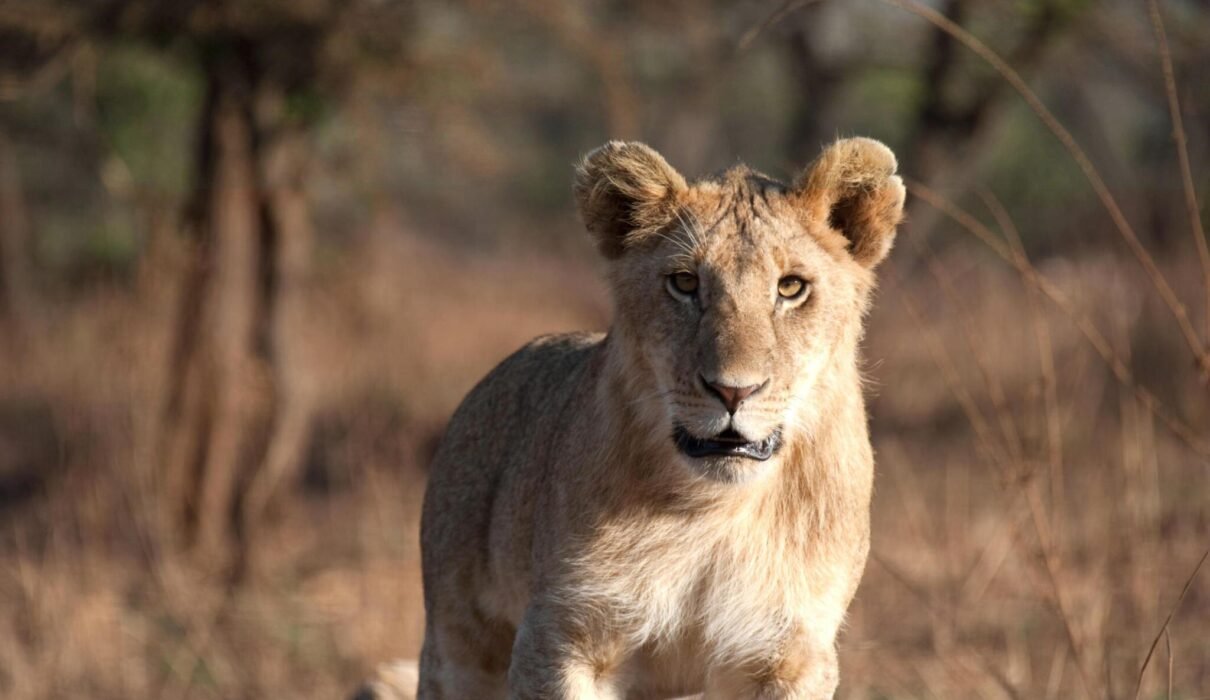Tanzania is home to the legendary African Big Five: the lion, leopard, elephant, buffalo, and rhinoceros. For wildlife enthusiasts, spotting these magnificent animals in their natural habitat is a once-in-a-lifetime experience. Tanzania’s vast and varied landscapes, including the Serengeti, Ngorongoro Crater, and Tarangire National Park, offer some of the best safari opportunities to witness the Big Five up close. This guide will take you through the best parks, tips for sightings, and why Tanzania is the ultimate destination for Big Five safaris.
Explore guided Big Five safaris in Tanzania.
1. What Are the African Big Five?
The term “Big Five” originally referred to the five most dangerous animals to hunt on foot. Today, it signifies the five most sought-after animals to see on a safari in Africa. Tanzania, with its world-famous national parks, offers exceptional opportunities to spot all five of these majestic creatures.
- Lion: King of the savannah, often found in prides.
- Elephant: The largest land mammal, known for its intelligence and social behavior.
- Leopard: Elusive and nocturnal, these cats are masters of camouflage.
- Buffalo: Strong and unpredictable, often seen in large herds.
- Rhinoceros: Critically endangered, rhinos are rare but can be seen in select Tanzanian parks.
Learn more about the history and significance of the Big Five.
2. Best Parks in Tanzania to See the Big Five
Tanzania boasts several national parks and conservation areas that provide the perfect habitat for the Big Five. Each park offers a unique safari experience, with different landscapes, wildlife concentrations, and accessibility.
Serengeti National Park
The Serengeti is one of the most iconic safari destinations in the world, famous for its vast plains and the Great Migration. It’s also a fantastic location to spot lions, elephants, leopards, and buffalo, while rhino sightings are rarer but possible in certain areas.
- Best Time to Visit: June to October for dry season safaris.
- Top Sights: Lions hunting during the Great Migration, herds of elephants near waterholes.
Discover more about safaris in Serengeti here.
Ngorongoro Crater
The Ngorongoro Crater is a natural wildlife haven and one of the best places in Tanzania to see the Big Five, including the critically endangered black rhino. The crater’s enclosed environment makes it easier to spot a wide range of animals in a short period.
- Best Time to Visit: Year-round.
- Top Sights: Black rhinos, prides of lions, and large elephant bulls.
Learn more about the wildlife of Ngorongoro Crater.

Tarangire National Park
Tarangire is known for its large elephant herds and massive baobab trees. While lions and leopards are common, the park is particularly noted for its diverse bird species and unique landscape.
- Best Time to Visit: June to October.
- Top Sights: Elephants, lions, and tree-climbing leopards.
Explore Tarangire National Park safaris.
Selous Game Reserve
Although less visited than the northern parks, Selous Game Reserve offers a remote and wild safari experience. It’s home to all Big Five animals, with a strong focus on conservation.
- Best Time to Visit: June to October.
- Top Sights: Elephants and buffalo in large herds, sightings of elusive leopards.
Find out more about Selous Game Reserve here.
3. Lion: The King of Tanzania’s Savannah
Lions are the most social of the Big Five and are often seen in large prides in Tanzania’s national parks. The Serengeti is one of the best places to witness these magnificent animals in action, especially during the Great Migration when prey is abundant. You can often spot lions lounging under trees or hunting during early mornings and late afternoons.
- Best Parks: Serengeti, Ngorongoro Crater.
- Safari Tip: Early morning game drives increase your chances of seeing lions hunting.
Discover why the lion is called the king of the jungle.
4. Elephants: Giants of Tanzania’s Wilderness
Tanzania is home to large populations of African elephants, especially in Tarangire National Park, where herds of up to 300 can be seen. Elephants are highly intelligent and social creatures, and watching them interact in family groups is a highlight of any safari. The lush environment of Tarangire and Selous Game Reserve supports large herds of these gentle giants.
- Best Parks: Tarangire, Selous, Serengeti.
- Safari Tip: Visit during the dry season to see elephants congregating around water sources.
Learn more about elephant conservation in Tanzania.
5. Leopard: The Elusive Predator
Leopards are solitary and nocturnal, making them one of the hardest Big Five animals to spot. However, Tanzania’s national parks, particularly the Serengeti and Tarangire, are prime locations to glimpse these elusive predators. Known for their incredible stealth, leopards often rest in trees during the day, making them harder to see.
- Best Parks: Serengeti, Tarangire, Selous.
- Safari Tip: Look for leopards in tree branches, especially during midday heat.
Discover how leopards blend into their environment.
6. Buffalo: Powerful and Unpredictable
African buffalo are among the most dangerous animals on the continent due to their unpredictable nature. They are often seen in large herds, grazing across Tanzania’s savannahs. Buffalo are a common sight in most of Tanzania’s major parks, where they can be seen in herds of hundreds, usually near waterholes or grazing in the open grasslands.
- Best Parks: Ngorongoro Crater, Serengeti, Selous.
- Safari Tip: Buffalo are most active in the early morning and late afternoon.
Learn more about the African buffalo.
7. Rhinoceros: The Rarest of the Big Five
Rhinoceroses are the most endangered of the Big Five, particularly the black rhino, which has been critically threatened due to poaching. However, the Ngorongoro Crater offers a unique opportunity to see black rhinos in the wild. Conservation efforts in Tanzania are ongoing to protect these majestic animals.
- Best Park: Ngorongoro Crater.
- Safari Tip: Be patient and keep your binoculars ready, as rhinos are often shy and stay in the distance.
Learn more about rhino conservation efforts in Tanzania.
8. Best Time to See the Big Five in Tanzania
The best time to visit Tanzania for a Big Five safari is during the dry season, from June to October. During these months, the animals are easier to spot as they gather around waterholes, and the vegetation is thinner, improving visibility. However, if you’re interested in combining a safari with the Great Migration, plan your visit between June and September for the best experience.
- Dry Season: June to October for the best chance to see all Big Five animals.
- Migration Season: June to September to combine wildlife viewing with the Great Migration.
Plan your Tanzania safari trip with these tips.
9. Conservation Efforts to Protect the Big Five
Tanzania’s wildlife faces numerous threats, including poaching, habitat destruction, and human-wildlife conflict. The government and numerous NGOs work tirelessly to protect these species, particularly the endangered rhino and elephant populations. Tourists visiting Tanzania can help by supporting eco-friendly lodges and participating in responsible wildlife tourism that directly benefits conservation projects.
- Rhino Conservation: Ongoing efforts to increase black rhino populations in protected areas like Ngorongoro.
- Anti-Poaching Initiatives: Programs focused on reducing poaching, particularly for elephants and rhinos.
Learn how you can support wildlife conservation in Tanzania.
10. Responsible Wildlife Tourism in Tanzania
When planning your Big Five safari in Tanzania, it’s important to choose ethical and sustainable tour operators. Responsible wildlife tourism ensures that local communities benefit from the income generated by tourism, while also supporting conservation efforts to protect the Big Five and their habitats.
- Choose Eco-Friendly Lodges: Look for lodges that prioritize sustainability and contribute to local conservation.
- Respect Wildlife: Always maintain a safe distance from animals and avoid disturbing their natural behavior.
Find out more about responsible wildlife tourism in Africa.
Conclusion
Tanzania is the ultimate destination for those looking to experience the African Big Five in their natural habitat. From the vast plains of the Serengeti to the dramatic landscape of the Ngorongoro Crater, this country offers unparalleled opportunities to witness lions, elephants, leopards, buffalo, and rhinos in action. Whether you’re an experienced safari-goer or planning your first wildlife adventure, Tanzania provides an unforgettable Big Five safari experience.
For more information on planning your Big Five safari, visit Kilimanjaro Climb Specialist or Eddy Tours & Safaris.

